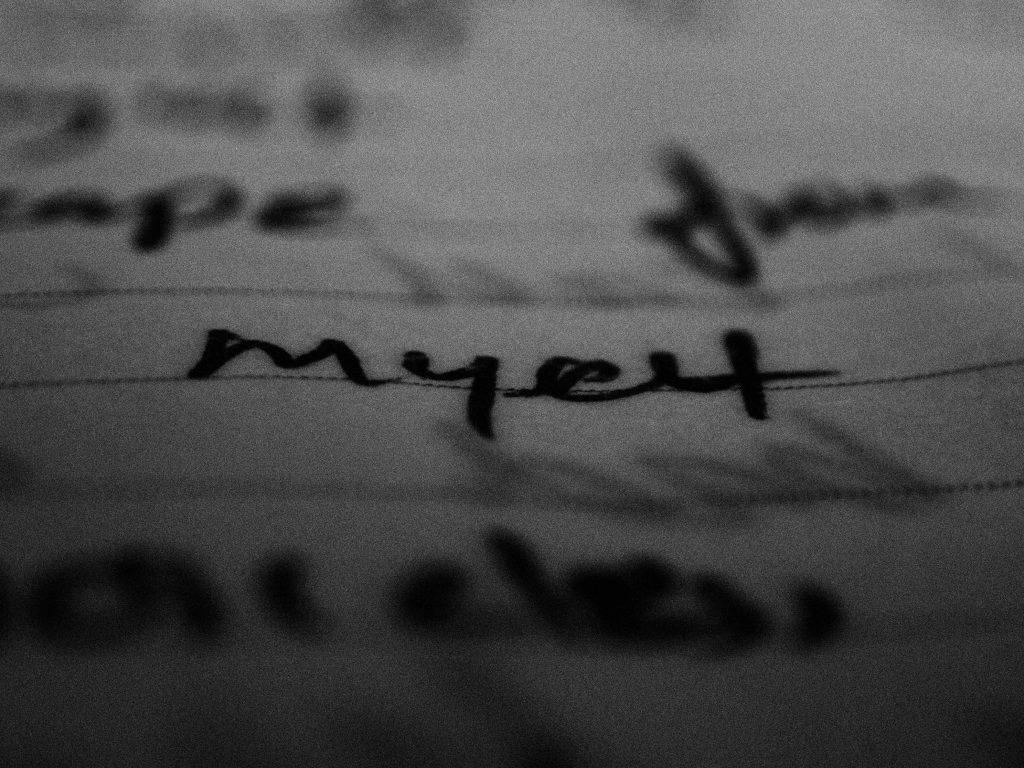“How to Set Healthy Boundaries with yourself”

Home About counselling About creative therapy About Sensory Processing Sensitivity About me Book a session FAQ’s Blog Home About counselling About creative therapy About Sensory Processing Sensitivity About me Book a session FAQ’s Blog Setting boundaries with yourself is the first step toward healthier living. Setting healthy boundaries with yourself foremost, will support you to live a more balanced life and equip you to deal with and relieve stress and anxiety. Setting healthy boundaries, we have heard it so many times before. Everyday we encounter huge amounts of information, advice, explanations and quick fixes. However, when the space around us is lost and we cannot see below the noise of the world anymore, you might find yourself stuck, frustrated with how we are or how we are living and have lost our way. We are left feeling exhausted, stressed and anxious, which can lead to burnout. Consequently, this often leads us to struggle to see a future where we can make the changes that we need within ourselves, our relationships and our work. What are boundaries? Boundaries are similar to a protective barrier. This makes me think back to explaining what perimeter is to children. It is the fence around the field as you do not want the horse to escape or to get hurt. So our boundary with ourselves is like this perimeter, that helps us to figure out what we will and will not accept in our lives (the field, or meadow). It helps us to define our needs, values and priorities. It can help you with making decisions, it will influence your behaviour and is so incredibly important in maintaining our mental and emotional wellbeing. There are different forms of boundaries; they can be physical, emotional or digital. They all define how we relate to other and ourselves. Boundaries is like a mechanism that protects our wellbeing and strengthens our sense of safety. Different types of healthy boundaries: Physical boundaries are boundaries that protects your personal space and sets rules around physical touch. Emotional boundaries are boundaries that helps with protecting your feelings and emotional health. Time boundaries help with allocating and valuing your time, avoiding overcommitting or doing something you really do not want to do. Digital boundaries are there to help you manage your online presence and interactions. Why do we have to start with ourselves? It does start with setting boundaries with yourself as we can only control our own actions and behaviour. Setting healthy boundaries is a skill that is vital in todays world. It can help you with relieving stress, be clearer with your communication, foster better relationships and ultimately help you with not getting in a burnout by our world that constantly demands our attention and energy. Shift from suffering to caring. Our suffering and recurring personal and emotional issues we all experience in our daily lives, often lack boundaries. Think of it as a way of looking after ourselves, holistically, which takes in account how we eat, sleep, exercise, communicate, treat others. This will cause us to think about what we need. A way of being kind to ourselves, to look after ourselves, before we look after those around us. Counselling can help to figure out where your need is most urgent, how to attend to those needs by learning about your own boundaries. Focus inward Focusing inward can help with figuring out what it is that we need and where you need to set healthy boundaries. Journalling can be a powerful tool to support you on this journey and can lead to the change that you are looking for: Get more clarity; as mentioned, boundaries helps with clarifying what it is that we need, our values, priorities and goals. These allow you to make choices that start to correspond with who you truly are, rather than getting swamped by the faced paced world with expectations and obligations. Get more energy by recognising your limits. This could be a boundary around how much work you take on, how late you stay up or how often you say yes to yet another night out. You can protect that energy for what is really important to you. It will also help you to recharge and reconnect with yourself. Get more agency over your own life. When the focus is on your own needs, you create more space for joy, creativity and real connection. You do not need to feel like your life is passing by without taking part in it, instead, you will find yourself getting more intentional with everything that you do. What are other benefits of setting boundaries? Setting boundaries not only improves our own mental and emotional wellbeing, but will filter into our external world as well. That can be at work, with your relationships, spouse or children. It can help to reduce stress as you will learn to clearly communicate your limits and needs, which will alleviate overwhelm and anxiety. When you communicate clearly, you also reduce the risk of being misunderstood. Others will exactly know what to expect from you and you will now what you can expect from them, it create mutual respect. Overextending yourself; staying up too late, saying yes to another project, helping out another person again, will lead to exhaustion. Setting boundaries ensure that you prioritise yourself and your limits, preventing burn out. Five steps to setting healthy boundaries with yourself. Self reflect. Journalling is a great way to reflect on yourself, your relationships and your world. Identify what areas are feeling overwhelming at this moment or where you feel taken for granted. Understand where your limit is and your need. Communicate clearly. Firstly with yourself. Be honest about your limits. Write them down, speak it out loud, practice to reinforce them. Remember, it is ok to say no to what doesn’t fit with your boundary. It is not a weakness to have limits, but a powerful tool to reclaim yourself. When you are ready,
Feeling detached from life? What stress can cause.

Home About counselling About creative therapy About Sensory Processing Sensitivity About me Book a session FAQ’s Blog Home About counselling About creative therapy About Sensory Processing Sensitivity About me Book a session FAQ’s Blog Feeling detached and lost? What stress can cause. What is it like to feel detached from life? Feeling detached from life can manifest in lots of different ways. It can build slowly and out of awareness due to the relentless cycle of demands, expectations and not feeling valued, and it is not uncommon to find ourselves feeling numb, detached, completely exhausted and utterly lost. Understanding the numbness, the detachment and whirlwind of other emotions, is the first step forward as it can stem from factors like burnout, a lack of boundaries or the overwhelming stress of life. The experience of numbness. Caring too much, feeling too much, brought me to the point of not caring at all. When I realised I didn’t care about the things that were once important to me anymore, I withdrew. I went through the motions of the expectations at work, but I felt flat. I was disengaged from friendships, I didn’t have the energy to do the things I once enjoyed and I lost my spark, including my creative spark which was an integral part of my being. The ‘be strong’ and ‘try hard’ (as described by Taibi Kahler in TA theory) parts inside me is what kept me going for way too long. Again. Something deeper, burnout? This was a signal that something deeper was going on, such as a burnout – a state of physical, emotional but most of all, mental exhaustion by prolonged stress. The mental exhaustion is not just me being lazy or tired; it is a cumulation of a silent predator, chronic stress. Caused by overwhelming responsibilities and expectations. And when there is no compassion from others and you feel not valued, it hits harder, deeper. We can deal with a lot of stress as human beings, we can even thrive on a good amount of it. But when the value, appreciation and meaning disappear, it was impossible to keep up with the stress. Photo by Nima Simyari Other contributors to becoming detached. Other contributors to feeling detached, numb, flat and exhausted can be the lack of boundaries. When we have no boundaries around our time and energy and the things we love to do, we risk running on empty to the point of emotional numbness. The societal pressure of always having to be ‘doing’ something, more and more, creates a state of constant alertness in our bodies, which can also lead to a disconnection of our feelings and needs. A feeling of ‘nothing matters anymore’ and becoming detached from life. This lack of boundaries and always having to succeed not only affects our productivity, it will also impact our relationships and our sense of self. Our own worthiness. The power of the pen. A powerful tool that has helped me in those turbulent times to build some understanding of my feelings and myself was journalling. Writing and other expressive ways are effective and proven methods to explore and process emotions and thoughts. It allowed me to express with imagery, pictures and words that I didn’t have inside to express my inner world thoughts. It can help shift through the constant chatter, to externalise complex feelings and to gain an insight in what I was experiencing. There is no right or wrong way to do this. As a visual person, pictures and phrases that ‘spoke’ to me, helped to prompt my own thought process. The key was to let things come out the way they wanted, not having to be perfect or not even to have to make sense. Even the actual motion of writing and being creative is already a great way to calm the nervous system. Photo by Wanli Remlinger Try these ways of journalling. If you are interested to try out creative journalling, you could consider these 3 different ways of starting: 1. Use questions as prompts, like: what does numbness feel like to me? Where in my body do I feel it the most? Where can I give myself 10 minutes to just sit, how would that feel? 2. Use pictures from magazines: if you have any magazines lying around, flick through the pages to see which pictures jump out to you. Do not try to rationalise why, just cut them out and stick them down in your journal. Use these pictures as a prompt to start writing. What did you feel when you saw the picture? What does the picture provoke in you? What does it tell you? What thoughts came up? What do you associate with the picture? Tip: In today’s world, you might not have any magazines at home. You could use google to find pictures as well. Sit with yourself and take a few breaths. Focus on the most prominent feeling you feel in this moment. Use that feeling as a search topic. Print out the pictures that speak to you the most and continue as described above. 3. Using words and phrases that might have come up in the same google search is another way that can help you get started with writing. What do those words mean to you? What feeling do they provoke inside of you? What other thoughts come up when you read them? Seeking support. While journaling can be a great tool to develop a better understanding of your inner world and thoughts that might swirl around, it is equally important to seek support through therapy. I can help and support you in exploring your feelings. These feelings can help you navigate the nuances of burnout and/or to identify the causes behind you feeling detached from life. Together we can explore which areas need tending to, how we can name the feelings you feel, to discover what your values are, which